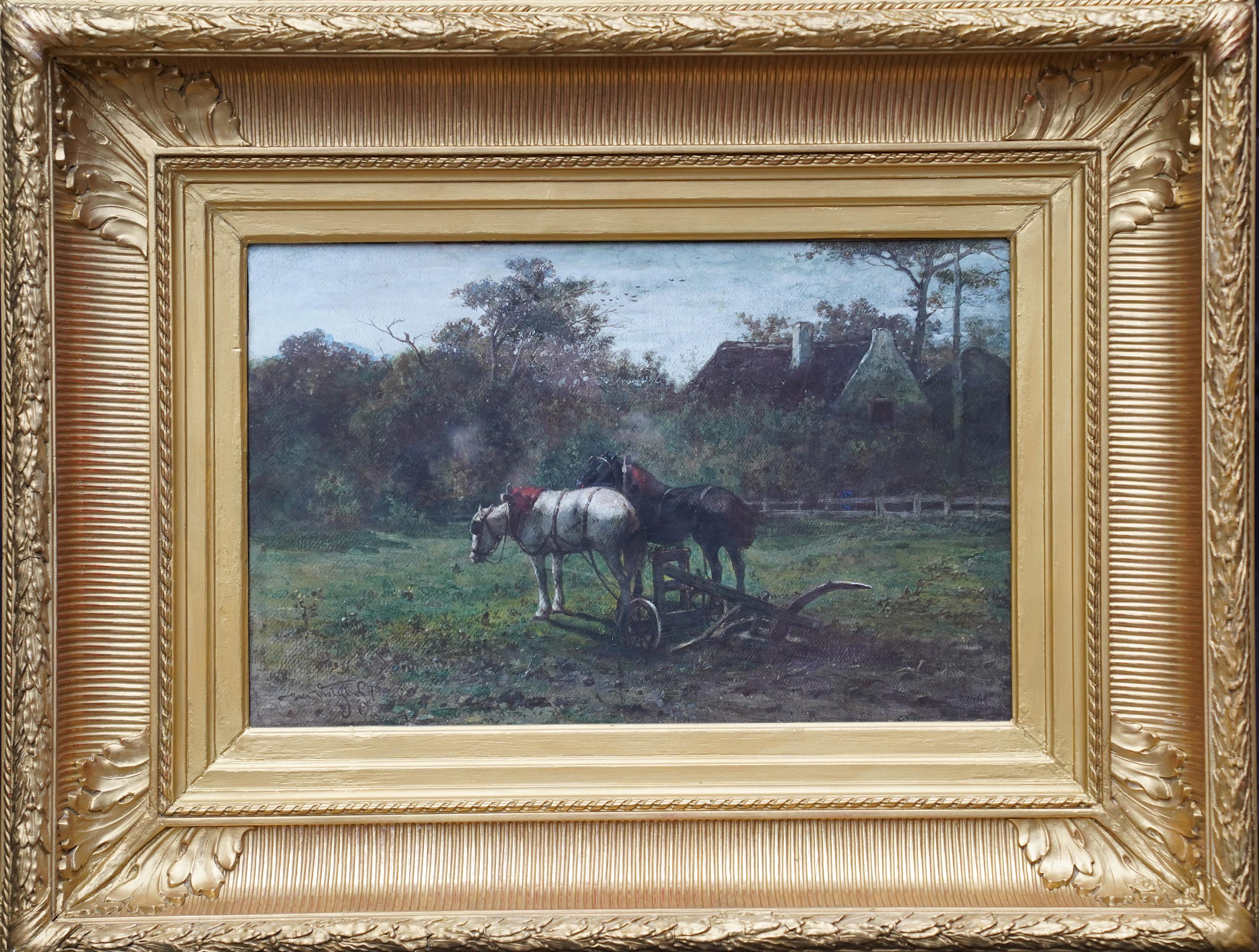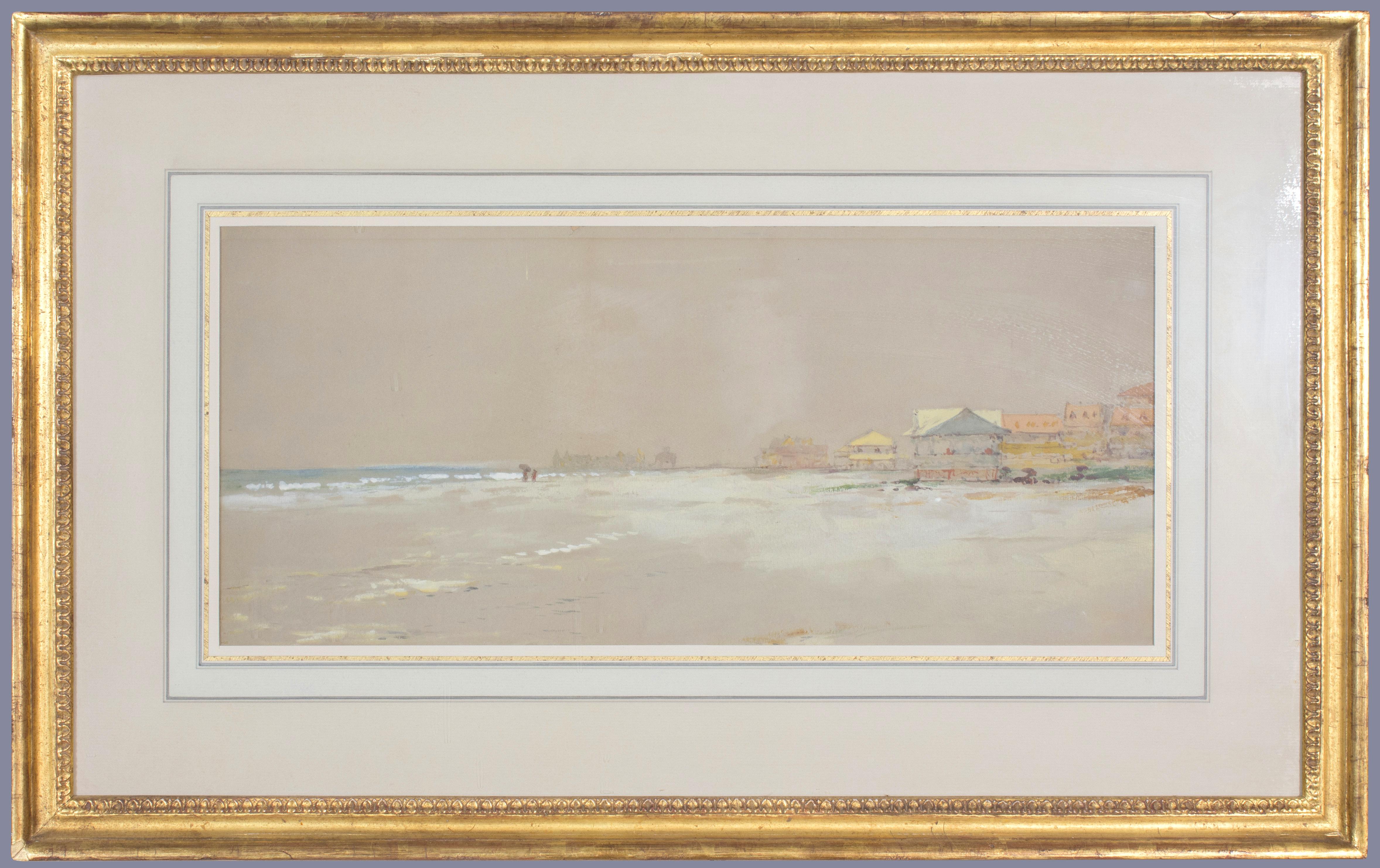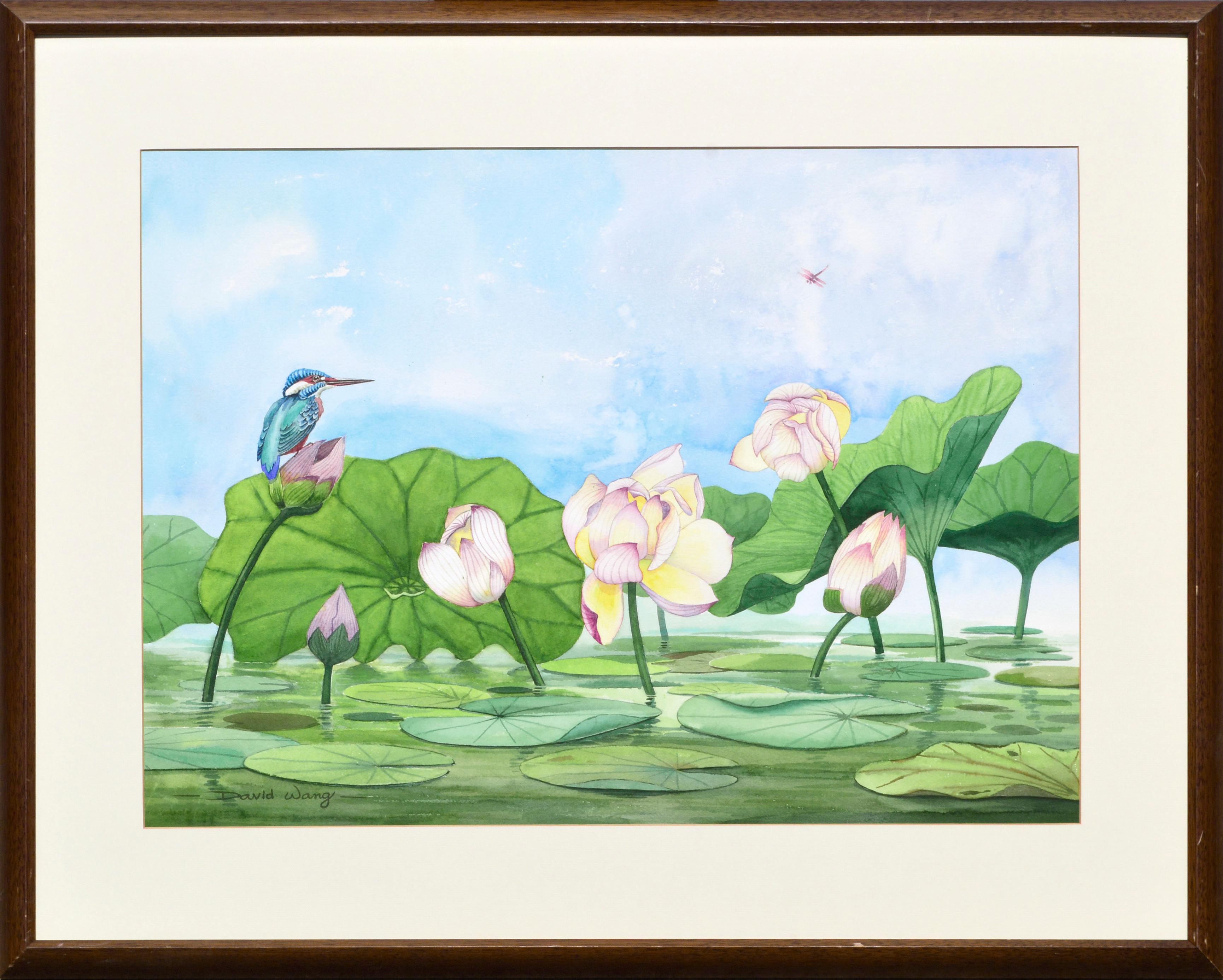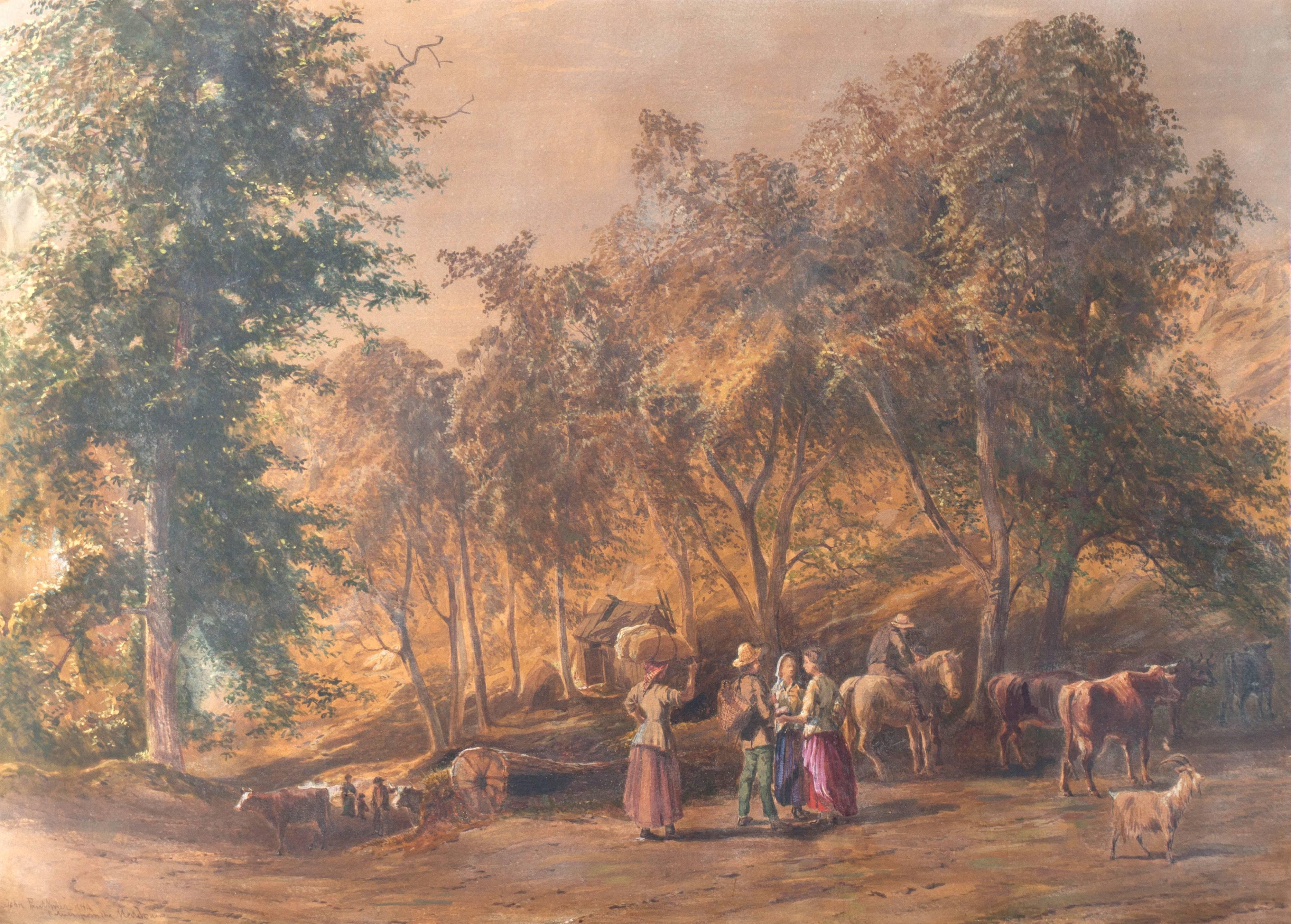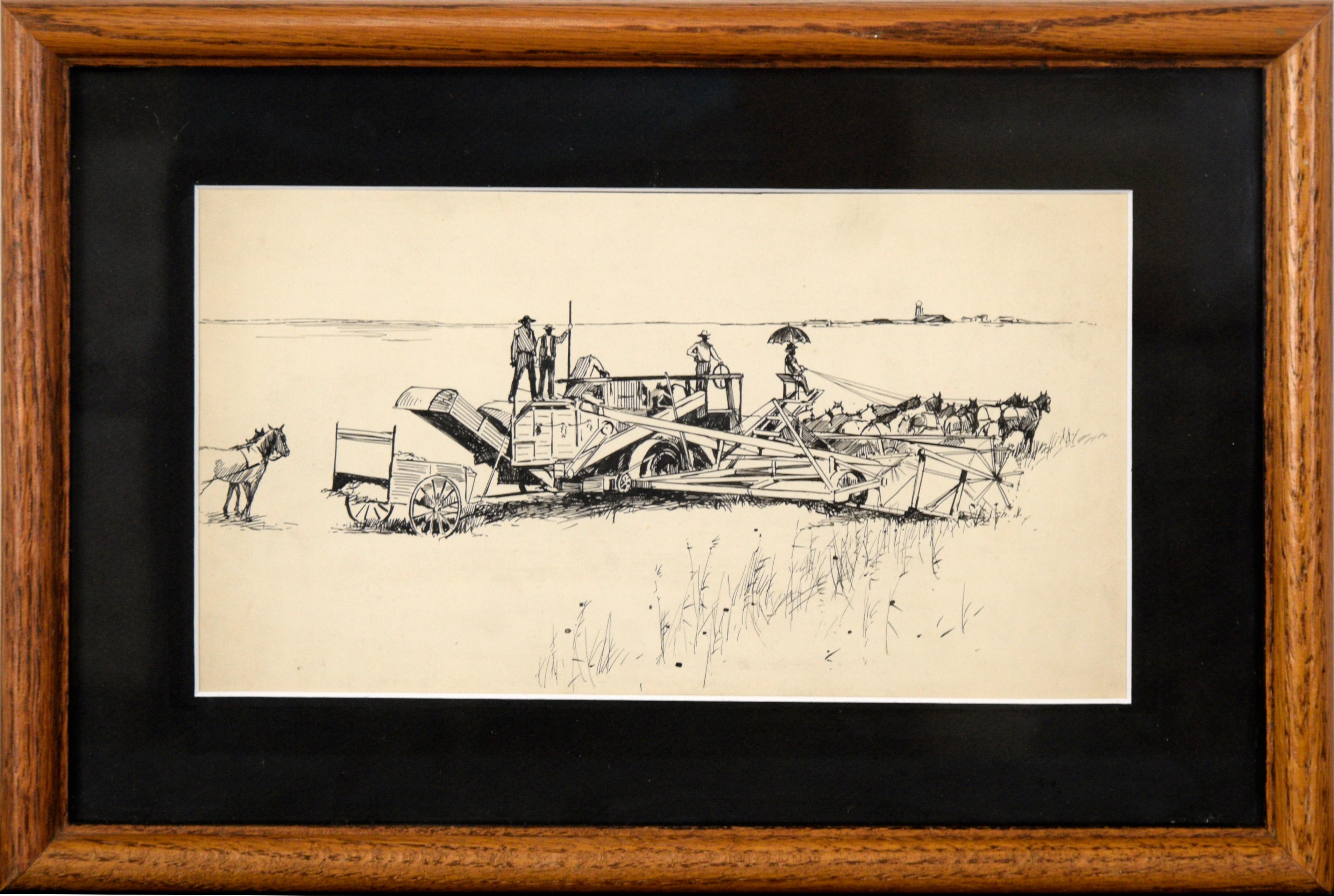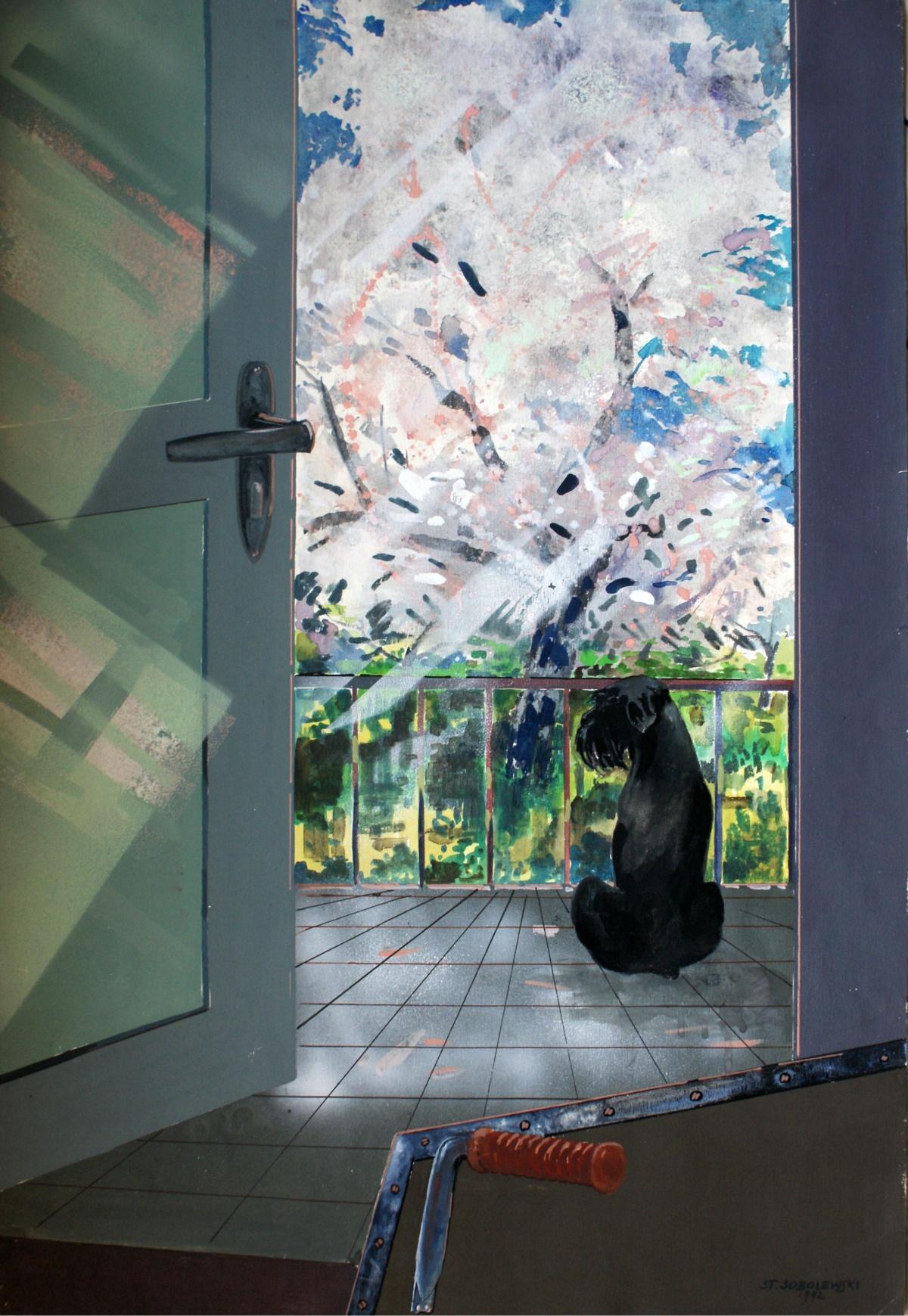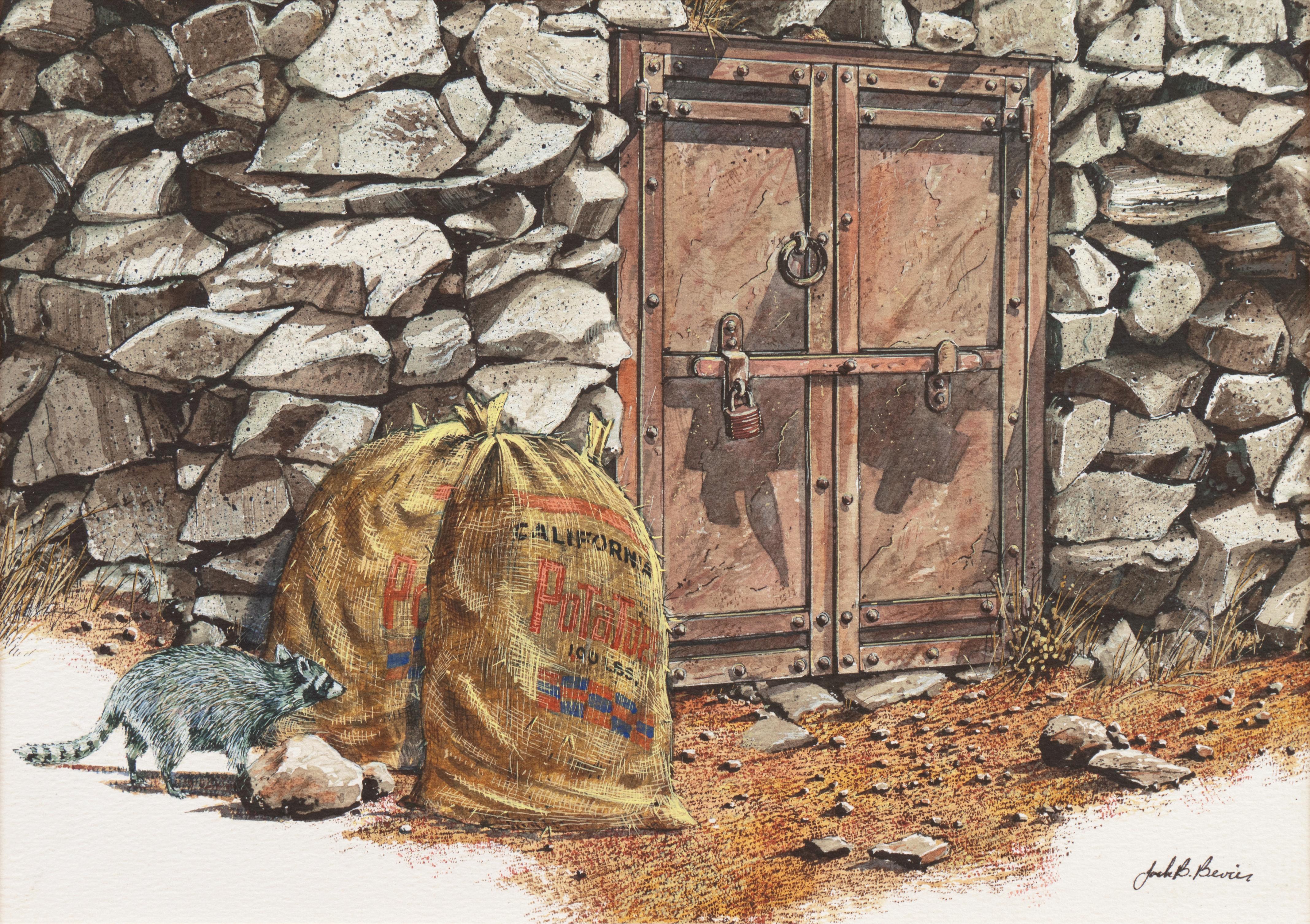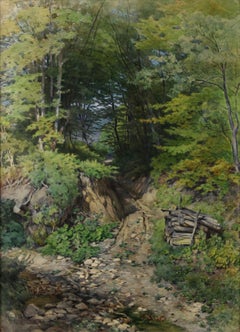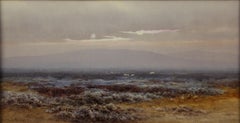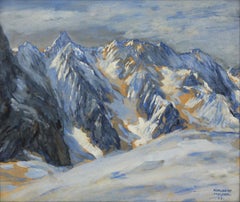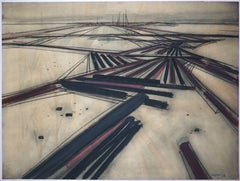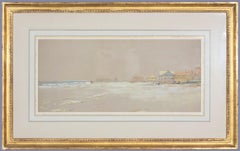
Draft Horse with Cart / - The Burden of Life -
View Similar Items
Want more images or videos?
Request additional images or videos from the seller
1 of 10
Julius Paul JunghannsDraft Horse with Cart / - The Burden of Life -
About the Item
- Creator:Julius Paul Junghanns (1876 - 1953, Austrian)
- Dimensions:Height: 19.3 in (49 cm)Width: 19.69 in (50 cm)Depth: 1.97 in (5 cm)
- Medium:
- Movement & Style:
- Period:
- Condition:
- Gallery Location:Berlin, DE
- Reference Number:1stDibs: LU2438212766632
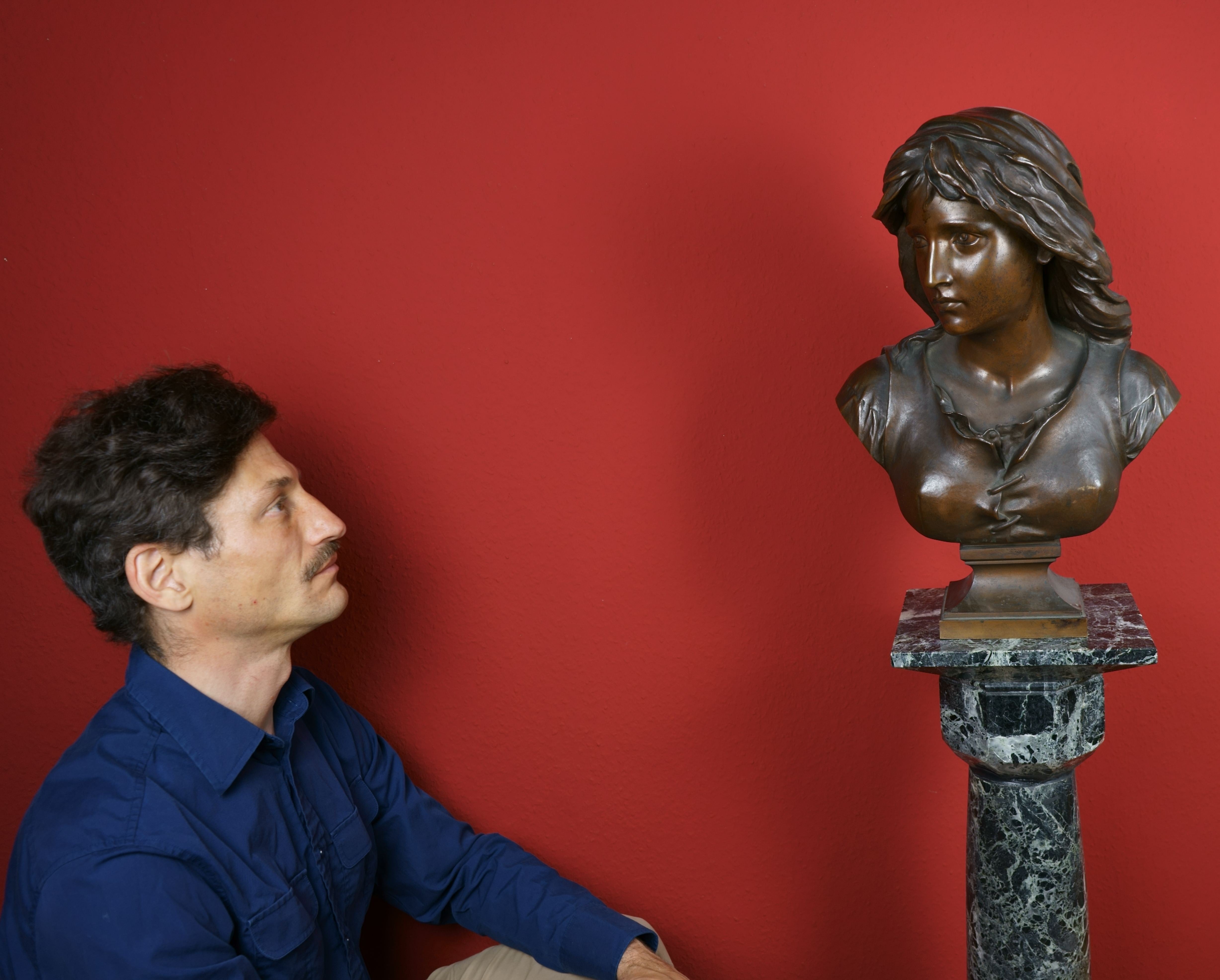
About the Seller
5.0
Gold Seller
Premium sellers maintaining a 4.3+ rating and 24-hour response times
Established in 2014
1stDibs seller since 2023
15 sales on 1stDibs
Typical response time: 4 hours
Authenticity Guarantee
In the unlikely event there’s an issue with an item’s authenticity, contact us within 1 year for a full refund. DetailsMoney-Back Guarantee
If your item is not as described, is damaged in transit, or does not arrive, contact us within 7 days for a full refund. Details24-Hour Cancellation
You have a 24-hour grace period in which to reconsider your purchase, with no questions asked.Vetted Professional Sellers
Our world-class sellers must adhere to strict standards for service and quality, maintaining the integrity of our listings.Price-Match Guarantee
If you find that a seller listed the same item for a lower price elsewhere, we’ll match it.Trusted Global Delivery
Our best-in-class carrier network provides specialized shipping options worldwide, including custom delivery.More From This Seller
View AllShady hollow way - Into the heart of the forest -
By Hans Dvoràk
Located in Berlin, DE
Hans Dvořák (19th century). Shady hollow way in a sunny forest. Watercolour and pen-and-ink drawing, 58.5 x 43 cm (visible size), 70 x 55.5 cm (frame), signed and dated "Hans Dvořák ...
Category
1880s Realist Landscape Drawings and Watercolors
Materials
Watercolor
High Moorland Landscape in the fog - The world as a transcendent phenomenon -
Located in Berlin, DE
Charles Edward Brittan Jr (1870 Plymouth - 1949). High moor landscape in the fog. Gouache, signed at lower left "Charles E. Brittan", 18 x 34.5 cm (passepartout), 45 x 62 cm (frame)....
Category
Early 20th Century Realist Landscape Drawings and Watercolors
Materials
Watercolor
Wettersteinkamm - The blue of the mountains -
Located in Berlin, DE
Adalbert Holzer (1881 Munich - 1966 Munich). Wettersteinkamm. Watercolour, 29 x 34.5 cm (visible size), 37.5 x 43 cm (frame), signed and dated at lower right 'ADALBERT HOLZER [19]23'.
Framed behind glass. Frame shows signs of wear.
- The blue of the mountains -
About the artwork
The Wetterstein ridge is revealed to the viewer from a gentle, snow-covered hill. In contrast to conventional depictions of mountains, the painting is composed entirely of shades of blue, which condense into the blue-grey of the rock or fade into the white of the snow. As a complementary colour to the blue, Holzer virtuously activates the ochre ground. The uniform yet exciting polarity of the colours emphasises the massive majesty of the mountains and at the same time underlines the special character of the Wetterstein ridge. Holzer transferred the translucency of glass painting, in which he was originally trained, to watercolour and developed a pictorial language related to the art of Ferdinand Hodler, which earned him the nickname 'Master of Blue' and led to the appreciation of his watercolours in particular.
About the artist
After an apprenticeship as a stained glass painter at the Kunstgewerbeschule, Adalbert Holzer studied at the Munich Art Academy under Carl von Marr...
Category
1920s Realist Landscape Drawings and Watercolors
Materials
Watercolor
Raft Landscape in Sweden / - Temporary structures -
Located in Berlin, DE
Otto Eglau (1917 Berlin - 1988 Kampen), Raft Landscape in Sweden, 1956. Watercolor and ink on paper, 45 x 60 cm, signed in his own hand lower right with "Eglau" and dated "[19]56".
- somewhat darkened
Exposé as PDF
- Temporary structures -
About the artwork
A wide river landscape stretches out before us, its horizon line running across the upper part of the picture, creating the impression of enormous depth. The depth is further extended by the dark tree trunks, most of which spill into the picture, and at the same time rhythmized by their different positions. This sequence of movements gives the landscape a strong dynamic moment. Indeed, the landscape seems to be "fleeing" from beneath us. To keep the gaze on the foreground alone requires a real visual effort. By looking at the foreground, we have already arrived at the background. Therefore, we cannot speak of pictorial grounds in the classical sense. Rather, we are confronted with a structurally rhythmic continuum of space, the dynamics of which are further accelerated by the cut tree trunks in the foreground and the upright trunks in the background, which function as target marks.
Since the narrow strip of sky has the same white tonality as the ice, this area also fits seamlessly into the spatial structure, so that a deserted "structural landscape" unfolds before us. The structure, however, is not - as in the case of Piet Mondrian - completely abstract and thus something that exists independently of itself, removed from the time of natural space. The structures that Otto Eglau discovered in nature remain bound to it, which is why they exhibit a temporality that corresponds to the 'course of things'. Even if they correspond to an architecture of nature brought to representation, the structures are not substantial, but contingent. Artistically uncovered, they present themselves to Eglau at the very moment he captures them. In nature itself, these structures will never be repeated in the same way. Panta rhei - everything flows, even if the flow of time is frozen by his artistic representation and the image, for all its dynamism, radiates calm at the same time.
"The structures I put behind things, and the lines that hold my paintings, are signs of transient life. They are random like the trace a wave leaves in the sand, blurred like the border between sea and land, ephemeral like the life of a shell I hold in my hand."
- Otto Eglau
About the artist
After his release from captivity in 1947, Otto Eglau studied at the Hochschule für Bildende Künste in Berlin. He was a student of Oskar Nerlinger, Max Kaus and Wolf Hoffmann. From 1953 he taught free drawing for architects at the Technical University of Berlin. In the years that followed, Eglau undertook numerous study trips that took him to Scandinavia, the Arab world, the Far East and even Macau. During these travels he cultivated the technique of watercolour, which allowed him to work quickly in the open air, while retaining a strong painterly quality.
Scholarships enabled Eglau to stay in Japan from 1962 to 1963 and in Naples in 1970. From 1969 to 1976 Eglau was professor of etching at the International Summer Academy of Fine Arts in Salzburg. Between 1983 and 1988 Eglau worked simultaneously in his Berlin studio at Lietzensee, which had its own printing press, and in his studio in Kampen on the island of Sylt.
Otto Eglau's work has been shown in more than 100 solo exhibitions worldwide and in more than 120 group exhibitions.
"I love the vastness of the island. The mudflats off Kampen are my treasure trove; here I discover new shapes and colors every day. Without Sylt, I would be like a fish without water."
- Otto Eglau
Selected Bibliography
Hanns Theodor Flemming: Otto Eglau. Das graphische Werk, Flensburg 1966.
Heinrich Seemann (Einführung): Otto Eglau. Inselskizzen, Hamburg 1982.
Heinrich Seemann (Einführung): Otto Eglau. Japan, Nepal, Sylt. Aquarelle. Zeichen und Strukturen. Einführung von Heinrich Seemann, Hamburg 1986.
Otto Eglau: Watt-Tagebuch. Ausgewählte Aquarelle aus den Skizzenbüchern Otto Eglaus. Kampen 1996.
GERMAN VERSION
Otto Eglau (1917 Berlin – 1988 Kampen), Floßlandschaft in Schweden, 1956. Aquarell und Tusche auf Papier, 45 x 60 cm, unten rechts eigenhändig in Blei mit „Eglau“ signiert und mit „[19]56“ datiert.
- etwas nachgedunkelt
Exposé als PDF
- Temporäre Strukturen -
zum Werk
Vor uns erstreckt sich eine weite Flusslandschaft, deren Horizontline im oberen Bereich des Bildes verläuft, wodurch der Eindruck einer enormen Tiefenerstreckung entsteht. Die Tiefe wird von den dunklen, zumeist ins Bild hineinfluchtenden Baumstämmen zusätzlich geweitet und – durch ihre verschiedenartigen Lagen – dabei zugleich rhythmisiert. Durch diese Bewegungsabfolge weist die Landschaft ein starkes dynamisches Moment auf. Und tatsächlich stellt sich der Eindruck ein, als ob die Landschaft unter uns ‚hinwegfluchten‘ würde. Den Blick einzig im Vordergrund zu halten, verlangt regelrecht eine visuelle Anstrengung. Auf den Vordergrund schauend sind wir bereits im Hintergrund angelangt. Daher kann gar nicht von Bildgründen im klassischen Sinne gesprochen werden. Vielmehr steht hier ein strukturell rhythmisiertes Raumkontinuum vor Augen, dessen Dynamik von den angeschnittenen Baumstämmen vorne und den als Zielmarken fungierenden aufgerichteten Stämmen hinten zusätzlich beschleunigt wird.
Da der schmale Himmelstreifen dieselbe Weißtonalität wie die Wasserlandschaft aufweist, fügt sich auch dieser Bereich bruchlos in das Raumgefüge ein, so dass sich vor uns eine menschenleere ‚Strukturlandschaft‘ ausbreitet. Die Struktur ist aber nicht – wie dies bei Piet Mondrian der Fall ist – gänzlich abstrakt und dadurch etwas eigenständig für sich Bestehendes, das der Zeit des Naturraums enthoben ist. Die von Otto Eglau in der Natur entdecken Strukturen bleiben an diese zurückgebunden, weshalb sie eine dem ‚Lauf der Dinge‘ entsprechende Temporalität aufweisen. Auch wenn sie einer zur Darstellung gebrachten Architektur der Natur entsprechen, sind die Strukturen nichts Substanzielles, sondern kontingent. Künstlerisch aufgedeckt, bieten sie sich Eglau in eben jenem Moment dar, den er festhält. In der Natur selbst werden diese Strukturen niemals in derselben Art wiederkehren. Panta rhei – alles fließt, auch wenn sich der Fluss der Zeit durch seine künstlerische Darstellung verfestigt hat, wodurch das Bild – trotz aller Dynamik – zugleich auch Ruhe ausstrahlt.
„Die Strukturen, die ich hinter die Dinge setze, und die Linien, die meine Bilder halten, sind Zeichen des vergänglichen Lebens. Sie sind zufällig wie die Spur, die eine Welle im Sand hinterlässt, unscharf wie die Grenze zwischen Meer und Land, vergänglich wie das Leben einer Muschel, die ich in der Hand halte.“
- Otto Eglau
zum Künstler
Nach seiner Entlassung aus der Kriegsgefangenschaft 1947 nahm Otto Eglau ein Studium an der Hochschule für Bildende Künste in Berlin auf. Dort war wer Schüler von Oskar Nerlinger, Max Kaus und Wolf Hoffmann. Ab 1953 unterrichtete er freies Zeichnen für Architekten an der Technischen Universität Berlin. In den Folgejahren unternahm Eglau zahlreiche Studienreisen, die ihn nach Skandinavien, in den arabischen Raum, nach Fernost und bis nach Macau führten. Auf diesen Fahrten kultivierte er die Technik des Aquarellierens, die eine zügige Bildschöpfung im Freiraum erlaubt und dennoch eine stark malerische Qualität aufweist.
Stipendien ermöglichten es Eglau, sich von 1962 bis 1963 in Japan aufzuhalten und 1970 länger in Neapel zu verweilen. Von 1969 bis 1976 hatte Eglau die Professur für Radierung an der Internationalen Sommerakademie für Bildende Kunst in Salzburg inne. Zwischen 1983 und 1988 war Eglau parallel in seinem Berliner Atelier am...
Category
1950s Realist Landscape Drawings and Watercolors
Materials
Watercolor
The Ruins of St. Clement's Church in Visby, Sweden / - Real romanticism -
Located in Berlin, DE
Otto Günther-Naumburg (1856-1941), The Ruins of St. Clement's Church in Visby, Sweden. Watercolor and ink, heightened with white, on sand-colored paper, mounted on cardboard, 33 x 24...
Category
Early 20th Century Realist Landscape Drawings and Watercolors
Materials
Paper
Wind Dodgers at the Baltic Sea / - The Sensuousness of the Baltic Sea -
Located in Berlin, DE
Theodor Scheerbaum (1897 Reichenbach im Vogtland), Wind Dodgers at the Baltic Sea. Watercolor on strong yellowish grained paper, 44 x 56 cm, signed by hand "Th[eodor] Scheerbaum" at ...
Category
1950s Realist Landscape Drawings and Watercolors
Materials
Watercolor
You May Also Like
Naturalistic Gray Toned Landscape Lithograph of La Grange Chicken Ranch in Texas
By Al Bates
Located in Houston, TX
Charcoal drawing by Houston, Texas artist Al Bates depicting the famous La Grange Chicken Ranch in the 1930s with visitors standing by automobiles. Signed and editioned 56 of 500 by ...
Category
1970s Realist Animal Drawings and Watercolors
Materials
Lithograph
Working Horses in a Landscape - Dutch Victorian animal art equine W/C painting
Located in London, GB
This lovely Victorian animal landscape watercolour painting is by Dutch artist Johannes Martinus Vrolyk or Vrolijk. Painted in 1875, the painting is of two working horses, one white ...
Category
1870s Realist Animal Drawings and Watercolors
Materials
Watercolor
Watercolor of Atlantic City Beach with Lucy the Elephant By E.D. Lewis
By Edmund Darch Lewis
Located in Philadelphia, PA
Edmund Darch Lewis (American, 1835–1910)
Atlantic City Beach Scene with Elephant, 1884
Watercolor on grey paper, 8 x 18 1/2 inches(sight); Framed: 16 x 26 inches
This view of the beach near Atlantic City features Lucy the Elephant...
Category
1880s Realist Landscape Drawings and Watercolors
Materials
Paper, Watercolor, Gouache
$3,600 Sale Price
20% Off
Mid Century Horse in Winter Landscape
By William Ernest Smyth
Located in Soquel, CA
Charming mid century watercolor painting of a horse in winter with a barn in the background by Ernest Smythe (American/England 1881-1950). Signed "ERNEST SMYTHE" in lower left corner. Presented in a tan mat with a wood frame and glass. Image size: 25"H x 19.75"W
As William Ernest Smyth, he was born at 13 Commercial Road, Ipswich on 9 April 1874 but was not baptised at St Michael's, Ipswich until 23 October 1885, when his birth date is given as 17 February 1874, youngest son of artist Thomas Smythe...
Category
Mid-20th Century Realist Animal Drawings and Watercolors
Materials
Watercolor, Illustration Board
Bird Perched on Water Lilies
By David Wang
Located in Soquel, CA
Bright watercolor of lilies in a pond with a bird by David Wang (Chinese-American, 20th Century). Signed "David Wang" in the lower left corner. Presented in a cream mat with a wood frame and plexiglass. Image size: 22.5"H x 30"W
David Wang is a native of Beijing, China. He gained his education from the Beijing Education College of China in 1984, where he learned various techniques in drawing, watercolor, oil painting, sculpture, graphic design, and Chinese watercolor. After receiving his Bachelor of Arts Degree, he became a fine arts teacher. During his eight years of teaching, he has taught hundreds of quality students, some becoming professional artists and cinematographers. Wang has also accomplished several major art and design projects, such as designing and creating an exhibit of the Terra-Cotta army warriors in the Forbidden City and interior designs for shopping plazas in Beijing.
In 1988, David came to the U.S as a visitor scholar and studied at the University of Southern California in Los Angeles. After his studies in 1992, he continued his profession as a full-time artist. For twelve years, he had a successful career creating visual art for the Walt Disney Feature Animation Florida Studio. He worked as a senior background artist doing work from concept development to production final work. His work has achieved him credits on: "Pocahontas," "Mulan," "Tarzan," "Lilo & Stitch," "Brother Bear," and "The Princess and the Frog...
Category
1990s Realist Animal Drawings and Watercolors
Materials
Paper, Watercolor, Pencil
'English Landscape with Figures', Royal Academy, London, RBA, Hibernian, Benezit
By John Faulkner
Located in Santa Cruz, CA
Signed lower left "John Faulkner, RHA" (Anglo-Irish, 1835-1894), titled, 'Return from the Meadows' and painted circa 1880.
A substantial nineteenth century watercolor and gouache s...
Category
Late 19th Century Realist Landscape Drawings and Watercolors
Materials
Gouache, Watercolor, Postcard
Recently Viewed
View AllMore Ways To Browse
Jean Lemonnier
Kendra Dandy
Original Black And White Drawing From Deco Period
Aubrey Williams On Sale
Bronc Rider
Gad Ullman
James Walter Gozzard
Mary Colie Spain
Nude Jade
Scott Kelley
Serge Hollerbach
Sir John Wynn
Watercolor Blue Heron
William Stott Of Oldham
Yarnall Abbott
Artyom Abrahamyan Beaver
Carl Hilgers
Chet Reneson
